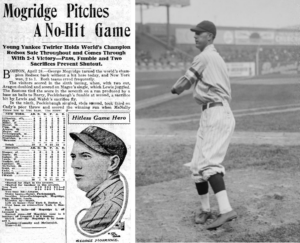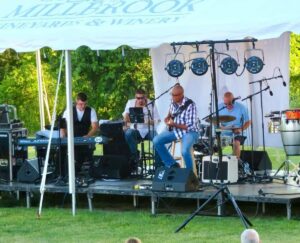Whitey Ford: Yankees’ Chairman of the Board

John Allen
More Stories By John Allen
- Mother’s Day: How Anthony Volpe’s mom molded him into a Yankee phenom
- Giancarlo Stanton to rejoin Yankees for Phillies series opener on Monday
- Yankees’ top prospect Jasson Dominguez nears return after oblique injury
- Rich Hill draws Yankees’ attention for midseason signing
- ‘They don’t act like Yankees,’ Francesa criticizes team’s lack of competitiveness
- November 15, 2023
- 1:40 am
- No Comments
Table of Contents
| Position | Pitcher |
| Active years | 1950-1967 |
| MLB Teams (years) | New York Yankees (1950, 1953–1967) |
| Debut | July 1, 1950 (Age 21-253d vs. Boston Red Sox) |
| Last game | May 21, 1967 (Age 38-212d vs. Detroit Tigers) |
| Date of Birth | October 21, 1928 |
| Native place | New York City, New York, U.S. |
| Batted | Left |
| Threw | Left |
| All-Star | 10× All-Star (1954–1956, 1958, 1959, 1960–1961, 1964) |
| World Champions | 6× World Series champion (1950, 1953, 1956, 1958, 1961, 1962) |
| Shirt retired | New York Yankees No. 16 |
| Hall of Fame year | 1974 (Voted by BBWAA on 284/365 ballots) |
| MLB Awards | Cy Young Award (1961) World Series MVP (1961) 3× AL wins leader (1955, 1961, 1963) 2× MLB ERA leader (1956, 1958) |
| MLB Record | MLB record 56-game hitting streak |
| Legacy | Monument Park honoree Major League Baseball All-Century Team Bob Feller Act of Valor Award |
| Nickname | The Chairman of the Board |
Whitey Ford‘s 16-year major league career epitomizes the New York Yankees squad that defined baseball during the postwar period. The 10-time All-Star and 6-time World Series winner was nicknamed “the Chairman of the Board” and led the American League (AL) in wins three times and earned run average twice. He has the most career wins (236), shutouts (45), innings thrown (3,170+13), and games started by a pitcher in Yankees history (438; tied with Andy Pettitte). With 236 victories in the legendary history of the New York Yankees, Whitey Ford earned his status as one of baseball’s all-time greatest left-handed pitchers.
He lost only 106 games, giving him a career-winning percentage of .690, the greatest among major-league pitchers with more than 200 wins since 1900. Whitey Ford’s career road-winning percentage of .695 is also the greatest in baseball history for a pitcher who has made at least 100 road appearances. After leading the Yankees to 11 pennants and six World Series titles, the pitcher was elected into the Baseball Hall of Fame in 1974.
Whitey Ford was recognized for his curveball and depended extensively on it later in his career, throwing it 50 to 75% of the time. He led or tied for the American League lead in wins three times (1955, 1961, and 1963), and he led or tied for the league lead in earned run average twice. His finest season was maybe the legendary 1961 season when Whitey Ford went 25-4 and won the Cy Young Award. Two years later, he had a 24-7 record to lead the Yankees to another title. He won (10) and lost (8) the most World Series games in history. In doing so, the Yankees pitcher established a record that is unlikely to be broken: 33 2/3 straight scoreless World Series innings, breaking Babe Ruth‘s previous record of 29 2/3.

Early life and career of Whitey Ford
On October 21, 1928, Edward Charles “Whitey” Ford was born in New York City. He was the only child of Jim and Edna Ford, who resided on Manhattan’s 66th Street. When Whitey Ford was five years old, his family relocated to 34th Avenue in Queens’ Astoria district, only a few miles from the Triborough Bridge and Yankee Stadium in the Bronx.
Whitey Ford’s father played semipro baseball for the Con Ed team, but two of his mother’s brothers also played semipro baseball in Astoria, so athleticism runs in the family. As a kid, he played baseball and stickball in the summer, football in the fall, and roller hockey in the winter. The pitcher and his friends played sandlot baseball until dark every summer on fields next to the Madison Square Garden Bowl, which was about a mile from his home. Closer to home, Whitey Ford and his friends used a rubber spaldeen and a broomstick to play stickball against a wall.
He grew up as a fan of the Yankees and looked up to Joe DiMaggio, who would later be on his team. As a child, the first thing he did every day was look at the box score to see how many hits DiMaggio had. Whitey Ford’s uncles would sometimes take him on the long subway ride to Yankee Stadium so he could see his idol play in person.
The pitcher had his first organized baseball team, the 34th Avenue Boys, made up of boys from his neighborhood. Their dads got together and bought uniforms for them, who were a group for five years.
In April 1946, when Whitey Ford was a senior in high school, he went to Yankee Stadium to try out as a first baseman for the Yankees. During fielding practice, scout Paul Krichell noted his powerful arm. He told Whitey Ford that he thought he was too small to play first base, but he had him throw a few pitches on the sidelines and showed him how to throw a curveball. The young player kept pitching during his senior years.
Whitey Ford went back to playing baseball for the 34th Avenue Boys the summer after his senior year. He pitched and played first base in every game and didn’t lose any of his 18 games. The team went 36-0 and won the Queens-Nassau semipro league. In September, Whitey Ford pitched against a team from the Bronx in the New York Journal-American championship game at the Polo Grounds. His team won 1-0 in 10 innings. He not only pitched a two-hitter, but he also doubled to start the top of the 10th inning, which broke up the other team’s no-hitter and allowed the winning run to come home. Then, in the bottom of the tenth, he struck out all three batters, giving him 18 strikeouts for the game. He won the Lou Gehrig Trophy as the game’s Most Valuable Player because of how well he played. In 24 years, Eddie, who was Ford’s son, would win the same trophy.
Drafting and career in pinstripes
Whitey Ford hoped to get a big signing bonus when he turned pro, but his size seemed to work against him. After he played well in the championship game, the Boston Red Sox first gave him $1,000 to sign. The New York Giants then gave him $2,000, which made the Red Sox offer $3,000 instead. Ford wanted to sign with the Yankees the most, and Paul Krichell called him right away with a $5,500 offer. Ford agreed verbally, so Krichell and another Yankee scout, Henry Hesse, went to Whitey Ford’s home in Astoria to get him to sign a contract and take him to an exhibition doubleheader in Queens that some Yankee farmhands were playing in. They wanted him to sign right away, but Whitey Ford said he would rather wait until after the games to sign.
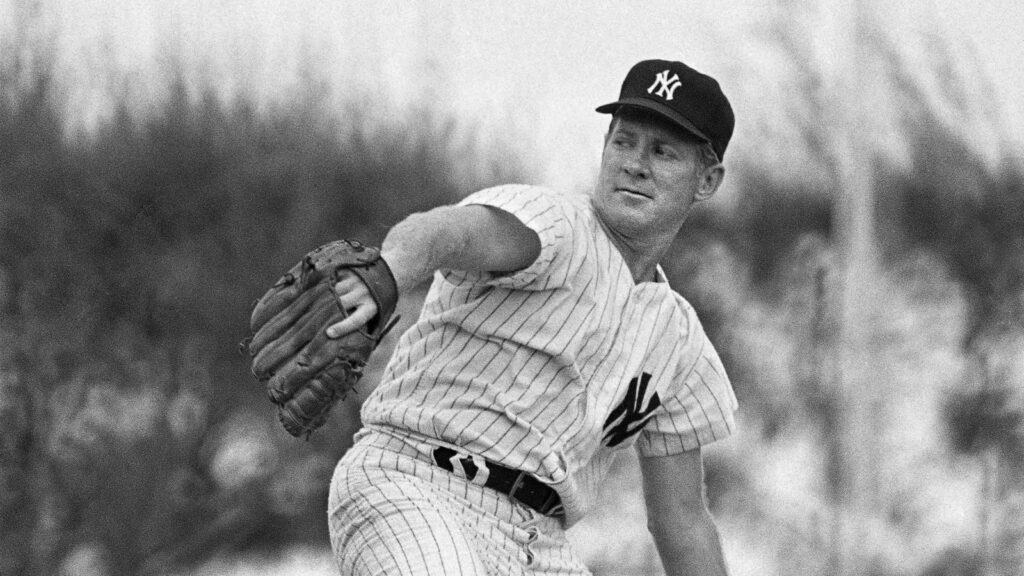
The Giants called his mother while they were gone and offered $6,500. Even though Whitey Ford would have signed with the Yankees for almost no bonus, Krichell had to immediately raise the offer to $7,000. In 1947, he was sent to Edenton, North Carolina, to train with the Binghamton Triplets of the Eastern League for spring training. Lefty Gomez, a former great southpaw pitcher for the Yankees, was in charge of the Triplets. He had trouble remembering all of the names of his new players, though. He first called Ford “Blondie” and then “Whitey,” but soon just called him “Whitey.” Even though that’s where the name “Whitey” came from.
After that first spring training, the Yankees sent Whitey Ford to the Class-C Middle Atlantic League to play for the Butler, Pennsylvania, Yankees. He won 13 of the 24 games he played there and lost 4. He did this with a mediocre fastball and a curve. With a 3.84 earned run average and a height and weight of 5’9″ and 150 pounds, the major leagues seemed like a long way off.
Whitey Ford’s performance in 1947 got him a promotion to the Class-B Norfolk Tars, but he had to take a pay cut from $250 to $200 a month. There, he pitched for a team that finished fifth in a six-team league. The pitcher went 16-8, lowered his earned run average to 2.58 over 216 innings, and led the league with 16 complete games. Whitey Ford was now 5’10” tall and 170 pounds, and his fastball had a little more power. Because of this, he had the most strikeouts in the league: 171.
He had a great season for the Class-A Triplets. He finished with a 16-5 record and led the Eastern League in earned run average (1.61) and strikeouts (151 in 168 innings). Casey Stengel often said that Whitey Ford called him after the Triplets won the Eastern League title and told him that if he wanted to win the pennant, he should “bring him up from Binghamton.”
Whitey Ford finally made his spring training debut against the Phillies in Clearwater in 1950. He pitched well for three innings. He hurt his elbow, though, and the next time he played, against the Detroit Tigers in Lakeland, he got hit around a lot. He was soon sent down to the Kansas City Blues camp. The pitcher started off strong, and by the end of June he was 6-3 with a 3.22 earned run average and had finished eight of his 12 starts. Because of how well he played, he was moved up to the Yankees. At age 21, Ford was a big leaguer.
Whitey Ford’s MLB debut
He went from Kansas City to Boston, where the Yankees were playing, and it took him all day and night to get there. He got there at 7:00 AM on July 1, 1950. By the second inning of that day’s game, Ford had already played in the big leagues for the first time. In that inning, Tommy Byrne was knocked out of the box, and Casey Stengel sent Ford in from the bullpen when there was only one out. It got off to a very rough start. Whitey Ford gave up five runs in 4 2/3 innings. They came from seven hits and six walks. After the game, he found out that Red Sox first-base coach Earle Combs had heard his pitches and told the Boston batters about them. The next day, Eddie Lopat and pitching coach Jim Turner helped him figure out what was wrong and fix it. Before he lost a game in relief, he had won his first nine games.
Five days later, on July 6, Whitey Ford made his first start in the major leagues. He played against the Philadelphia Athletics at Yankee Stadium in front of about 65 family and friends and limited the A’s to three hits and one run in six innings. But in the seventh, the A’s hit him for three runs. Yogi Berra‘s ninth-inning double helped the Yankees win 5-4, though. On July 17 against the Chicago White Sox at Yankee Stadium, he pitched all the way through the eighth inning and got his first win in the major leagues.
When Stengel sent Whitey Ford to the mound on September 16 in a very important game against the Tigers in Detroit, everyone was surprised. Ford was on his game in front of 56,000 angry fans, and so was Dizzy Trout, the veteran right-hander for Detroit. After five innings, there was no score. In the sixth, DiMaggio hit a home run to give his team a 1-0 lead. However, Whitey Ford gave up a run in the eighth when two doubles scored a run. Stengel surprised everyone by letting Ford bat in the top of the ninth. He worked a walk during a seven-run inning that made the score 8-1 and put the game out of reach. The Yankees moved back into first place after Whitey Ford pitched a 1-2-3 ninth inning.
His first season as a pitcher ended with nine wins, one loss, and a sparkling 2.81 earned run average despite having a rough start. Whitey Ford gave up only 87 hits in 112 innings and won seven of the 12 games he started. Two of those games were shutouts. He went 9-1 in 20 games and had an earned run average of 2.81. He was the runner-up for AL Rookie of the Year. Even though he only pitched 112 innings, Ford got a few votes for Most Valuable Player (MVP) and won the Sporting News Rookie of the Year Award.
Whitey Ford started Game 4 of the World Series and got 26 of the 27 outs. The Bronx Bombers beat the Philadelphia Phillies by a score of 5-2, which was enough to win the whole thing.
In 1951 and 1952, during the Korean War, Whitey Ford was in the U.S. Army. He went back to the Yankees for the 1953 season and joined Allie Reynolds, Vic Raschi, and Eddie Lopat to make the “Big Four.” But soon he became the Yankees’ number one pitcher, which everyone said was the best in the league. Whitey Ford got the name “Chairman of the Board” because he was able to stay calm and in charge in high-stress situations.
In 1954, he was chosen for his first All-Star Game. On July 16, he beat the Baltimore Orioles 3-2 with a seven-hit complete game, helping the Yankees win their 11th straight game and get within a half-game of the Indians. During the 1955 season, in 33 starts, Whitey Ford won 18 games and lost seven. This helped the Yankees win the American League again. On September 2, he had a no-hitter against the Washington Senators until the seventh inning when Carlos Paula hit a line single to left field. Whitey Ford finished the game with a one-hitter. Five days later, he did it again against the Philadelphia Athletics.
Whitey Ford was only the fifth pitcher in the history of the major leagues to throw two straight no-hitters. This helped him end his best season so far. In 1955, the Brooklyn Dodgers won the World Series after seven games, but it wasn’t because of Ford, who won Games 1 and 6 for the Yankees.
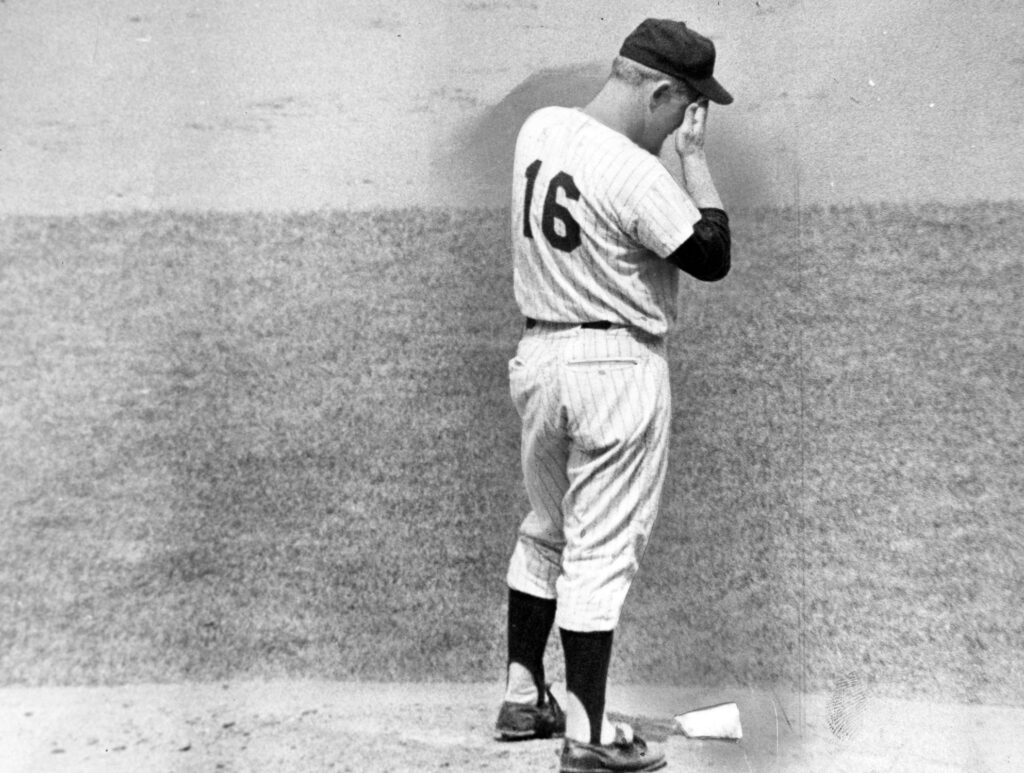
The pitcher started the 1956 season going 6-0 with an ERA of 0.83. He hurt his back in June and missed a week of games, but by the All-Star break, Whitey Ford was still 10-4 with an earned run average of 2.43. He made the All-Star team again. Whitey Ford seemed ready for his first 20-win season after he won his first four starts after the break, bringing his record to 14-4. But he got hurt and a stiff shoulder kept him out of action for 10 days.
He was the Yankees’ best player, so he started the last game of the World Series against the Brooklyn Dodgers. The game was at Ebbets Field, which was far from his favorite ballpark. It was small and the Dodgers were mostly right-handed, which was a bad combination. Whitey Ford lost 6-3. But Stengel put him in to start Game 3 at Yankee Stadium, even though he had only been off for two days and had only thrown three innings in the first game. The Yankees were down 2-0, and Ford had only thrown three innings in the first game. This time, he won a back-and-forth game 5–3 with a complete game. A three-run homer by Enos Slaughter in the sixth put the Yankees in the lead for good.
Of course, Don Larsen’s perfect game in Game Five is what most people remember about the 1956 Series. Whitey Ford, on the other hand, missed the last four innings because he was warming up in the Yankee bullpen in case Larsen failed.
Even though the Yankees won another pennant in 1957, Whitey Ford had a hard time that year. He had trouble with his shoulder for most of the early part of the season, and he was on the disabled list for six weeks in May and June. During that season, a group of Yankees, including him, went to Copacabana with their wives to celebrate Billy Martin’s 29th birthday and watch Sammy Davis Jr. perform. They got into an argument with some people on a bowling team who were making racist comments about Davis. Pretty quickly, either Hank Bauer or a bouncer broke the jaw of one of the bowlers and put him on the floor of a back room.
Even though Whitey Ford had problems with his arm, the Yankees beat the Chicago White Sox by eight games to win the pennant in 1957. They then played the Milwaukee Braves in the World Series. The pitcher had won three of his last four regular-season starts, so he was picked to start the first game of the Series at Yankee Stadium against Warren Spahn, the best southpaw in the National League. Whitey Ford answered by throwing a five-hit shutout to win the game 3-1. He went back on the mound for Game Five in Milwaukee, with the Series tied at two games each, but Lew Burdette beat him in a 1-0 duel.
The Yankees won Game Five 7-0, thanks to a five-hit shutout by Bob Turley. This kept the Yankees in the series, so Stengel brought Ford back for Game Six after only two days off. He had trouble, though, and gave up five hits and two runs in an inning and a third before Stengel took him out with the Yankees down by a run. The team came back to tie the game and then win it 4-3 in 10 innings.
In 1959, it was only the second time in Whitey Ford’s eight years with the team that they didn’t make it to the World Series. He had another good season, though. In 204 innings, he went 16-10 and had an earned run average of 3.04. On April 22, he had one of the best games of his career. Whitey Ford kept the Washington Senators from scoring for 14 innings, and his team won 1-0. He made 15 outs and only gave up seven hits. But as the season went on, the pitcher kept having elbow problems, which forced him to miss a few starts and kept him from making more than 29.
Bill Mazeroski’s dramatic ninth-inning home run in the last game of the 1960 World Series caused the Yankees to lose to the Pittsburgh Pirates. But Whitey Ford was great pitching a four-hit shutout in Game 3, which the Yankees won 10-0, and a seven-hit shutout in Game Six, which the Yankees won 12-0. Casey Stengel was criticized a lot after the World Series because he didn’t pitch Whitey Ford in the first game at Forbes Field.
In 1961, Whitey Ford had won 19 games by the end of July. On August 10, seven weeks before the end of the season, he won his 20th game. He won 25 games and lost only 4. That year, the Yankees won 109 games and won the pennant by eight games over the Detroit Tigers. Whitey Ford led both leagues by starting 39 games and pitching 283 innings. He won the Cy Young Award by a large margin back when there was only one award for both leagues.
Whitey Ford had an amazing year. In games he started after the Yankees lost, he went 12–0 and the team went 17–1, showing that he was the best stopper ever. In his 39 starts, the Yankees went 34-5 and won nine of the ten games in which he didn’t get a decision. Whitey Ford didn’t let a runner steal a base for 243 consecutive innings, which was a major-league record and a great example of how good he was at picking people off.
Early in September, before a game against Cleveland, the Yankees had “Whitey Ford Day” to celebrate his great season. That year, he started the first game of the World Series against the Cincinnati Reds and pitched a masterpiece, giving up only two hits and a walk. This was his third straight World Series shutout. Whitey Ford was named the World Series MVP because of what he did.
In the 1962 World Series, the Yankees played against the San Francisco Giants. Whitey Ford faced Billy O’Dell in the first game and his streak of going 33 innings without giving up a run ended in the second. In the third, the Yankees won 6-2 thanks to his 10-hit complete game. It was his 10th World Series win, which remains a record.
Whitey Ford had a record of 175-71 wins and losses going into the 1963 season. At 34, his winning percentage of .711 was much higher than anyone else who had at least 100 decisions in baseball history. He had a sore arm in spring training and a problem with blood flow in his left index finger early in the season. He lost his first two games, but then won the next four. After a loss to the Los Angeles Angels on May 19, he went to win 12 games in a row, making his record 16-3 by the end of July. He won 20 games for the second time in his career on September 2, and the Yankees won 104 games. He finished the season with a gaudy 24-7 record. Whitey Ford had the most wins, the best winning percentage (.774), and the most innings pitched (269). He was fourth with 189 strikeouts and sixth with 13 complete games. In his last 12 starts, he had an earned run average of 0.98 and went 8-1.
In 1964, he shut out the Chicago White Sox 3-0 in his second start of the season, giving him his 200th career win. By June 20, his earned run average was only 1.47, and his career record was 209-79, which is unheard of.
After that great start, Whitey Ford started to have hip problems and then got a bruised heel. At one point he went 41 days between wins. But in his last nine starts, when the Yankees were in a tight pennant race with the White Sox and Orioles, he went 5-1, had an earned run average of 1.55, and only twice gave up more than one run. He finished with a record of 17–6 and an ERA of 2.13, which was the third lowest in the league. He tied the Yankee record for most shutouts in a season with eight, and he was only one behind Babe Ruth for the most ever by a left-handed player in the American League.
In the World Series against the Cardinals, his left arm went numb. Whitey Ford went to see the famous heart surgeon Dr. Denton Cooley, who said that Ford had not had a heart attack. He did have a clogged artery, which happened because he had thrown so many pitches. Dr. Cooley didn’t want to do bypass surgery on Ford because he thought it would end his career. Instead, he did a procedure called a sympathectomy, which was meant to keep small blood vessels open all the time.
Whitey Ford was able to pitch in 1965 after the surgery, but he didn’t have full feeling in his left arm and had to wait between pitches, sometimes for 15 or 20 seconds, for the blood to move down his arm. Even though the Yankees were hurt all the time and fell to sixth place, 25 games behind the leader, he still managed to lead them to a 16-13 record.
Later years and retirement of Whitey Ford
It turned out that the cool weather made Whitey Ford’s circulation problems worse and made it hard for him to hold the ball correctly and throw anything but fastballs. After a 2-5 start to the season, the Yankees figured out that Ford could only pitch well when it was warm. He couldn’t sweat on his left side because of a medical procedure.
In 1965, when it was usually warmer during the day, Whitey Ford was 13-4 and had an earned run average of 2.52, but he was only 3-9 and had a 4.48 ERA at night. He did reach a milestone when he tied Red Ruffing’s Yankee record of 231 wins with a 3-1 win over the White Sox on a cold, 50-degree evening in Chicago. He was helped by a hot water bottle on the bench that he rested his left arm on between innings. On the last day of the season, he beat the Red Sox and passed Ruffing in terms of career wins.
Whitey Ford had high hopes that he would be able to keep pitching well despite his circulatory problems in 1966. He started the season well as a pitcher, but after five starts, he was 0-3 with an earned run average of 2.19. As his elbow got worse and he went on the disabled list for a month, his luck only got worse. On August 22, he went back on the disabled list and flew to Houston to have Dr. Cooley operate to get around the blocked vein, hoping that this time it would work.
He went to spring training as a non-roster invitee, but after a few good games in 1966, he signed a contract for 1967. Whitey Ford started the season in the Yankees’ rotation. He had five strong starts in a row, including his 45th career shutout, before his elbow started to hurt a lot. The doctor said that Whitey Ford had bone spurs and would need another surgery, but instead, he retired in a ceremony at Yankee Stadium on May 30, 1967.
The legend told the group of reporters, “I came in wearing a $50 suit, and I’m leaving wearing a $200 suit, so that’s pretty good.”
In 1995, he had surgery to remove a cancerous tumor from his head. In 2000, the cancer came back, and he missed Yankee spring training for the first time in 49 years. Whitey Ford died on October 8, 2020, when he was 91 years old. He was at home with his family in the town of Lake Success on Long Island while watching a Yankees playoff game.
The legacy
Whitey Ford played in the major leagues for 16 years. During that time, he helped the Yankees win 11 pennants and six World Series. Whitey Ford was the best strikeout pitcher of his time. In 1956 and 1958, he tied the AL record with six straight strikeouts.
The pitcher never threw a no-hitter, but in 1955, he had two games in a row with only one hit. This tied a record that was held by several pitchers. Whitey Ford was best known for his curveball, which he used 50–75% of the time by the end of his career. He once threw pinch-hitter Dave Philley seven straight curveballs.
Whitey Ford won 236 games for the New York Yankees over the course of his career, which is still a record for the team. With a.690 winning percentage, He is tied with Dave Foutz for the fourth-best in baseball history.
He and Mickey Mantle were both inducted into the National Baseball Hall of Fame in 1974. At that time, the Yankees retired Ford’s number 16, which he had worn for many years.
During the 1964 season, Ford was the Yankees’ pitching coach. He was the Yankees’ first base coach in 1968 and the pitching coach in 1974 and 1975.
Whitey Ford’s Greatest Moments
- 8-time AL All-Star (1954-1956, 1958-1961 & 1964)
- ML Cy Young Award Winner (1961)
- 1961 World Series MVP
- 2-time AL ERA Leader (1956 & 1958)
- 3-time AL Wins Leader (1955, 1961 & 1963)
- 3-time AL Winning Percentage Leader (1956, 1961 & 1963)
- 2-time AL Innings Pitched Leader (1961 & 1963)
- AL Complete Games Leader (1955)
- 2-time AL Shutouts Leader (1958 & 1960)
- 15 Wins Seasons: 10 (1953-1956, 1959 & 1961-1965)
- 20 Wins Seasons: 2 (1961 & 1963)
- 25 Wins Seasons: 1 (1961)
- 200 Innings Pitched Seasons: 11 (1953-1956, 1958, 1959 & 1961-1965)
- 200 Strikeouts Seasons: 1 (1961)
- Won six World Series with the New York Yankees (1950, 1953, 1956, 1958, 1961 & 1962)
- Baseball Hall of Fame: Class of 1974
FAQs about Whitey Ford
Who is Whitey Ford?
Edward Charles “Whitey” Ford, nicknamed “the Chairman of the Board”, was an American professional baseball pitcher who played his entire 16-year Major League Baseball career with the New York Yankees. He was a 10-time All-Star and 6-time World Series champion.
Where did Whitey Ford live?
Long Island and Florida
How old was Whitey Ford when he died?
91 years
How did Whitey Ford die?
Alzheimer’s disease
How much was Whitey Ford worth?
$4 million
When did Whitey Ford die?
October 8, 2020
How did Whitey Ford get his name?
He was nicknamed “Whitey” for his light blond hair.
What happened to Whitey Ford?
The Yankees retired his uniform number 16 in 1974 and dedicated a plaque in his honor in Monument Park in 1987. Ford served as the Yankees pitching coach in 1964 while still a player and from 1974 to 1975 after retiring.
How many pitches did Whitey Ford throw in a game?
Ford has three basic pitches—the fast ball, slider and curve, plus variations on each.
Where did Whitey Ford live as a child?
Astoria neighborhood of Queens
How many complete games did Whitey Ford have?
Ford threw 11 complete games
Where was Whitey Ford born?
Astoria, New York, United States
What ballpark was mermaid picture taken with mickey mantle and Whitey Ford?
Yankees Auto JSA
How much is a Whitey Ford autographed baseball worth?
A Whitey Ford single signed baseball is worth about $60. – $120. A Whitey Ford signed Photo is worth about $50.
How tall was Whitey Ford?
1.78 m
How many World Series did Whitey Ford win?
6
What position did Whitey Ford play?
Pitcher
How much the book the signature of Whitey Ford is worth?
A Whitey Ford single signed baseball is worth about $60.
What pitcher closed for Whitey Ford?
Right-hander Bob Grim
Why didn’t Whitey Ford start game 1 in 1960?
The reason was that Stengel, one of the most overrated managers in baseball history, didn’t know enough to start his best pitcher in the first game.
How many games did Whitey Ford pitch?
He is the Yankees franchise leader in career wins (236), shutouts (45), innings pitched (3,1701⁄3), and games started by a pitcher (438; tied with Andy Pettitte).
Who played Whitey Ford in 61?
Anthony Michael Hall
How fast did Whitey Ford throw?
87-88 mph
How many World Series games did Whitey Ford win?
10 World Series victories
What year was Whitey Ford in the military?
During the Korean War, in 1951 and 1952 Ford served in the Army
Whitey Ford retired when?
1968 season
What number was Whitey Ford?
16
How much is a Whitey Ford rookie card worth?
In average, a Rookie Card from Whitey Ford is valued with $189.95.
How many children does Whitey Ford have?
3
How much is a Topps baseball archives the ultimate 1954 series Whitey Ford?
Topps Archives the Ultimate 1954 Set Whitey Ford #37 HOF
The Stats
| SUMMARY | WAR | W | L | ERA | G | GS | SV | IP | SO | WHIP |
| Career | 57 | 236 | 106 | 2.75 | 498 | 438 | 11 | 3170.1 | 1956 | 1.215 |
Whitey Ford’s Standard Pitching
| Year | W | L | W-L% | ERA | G | GS | GF | CG | SHO | SV | IP | H | R | ER | HR | BB | IBB | SO | HBP | BK | WP | BF | ERA+ | FIP | WHIP | H9 | HR9 | BB9 | SO9 | SO/W |
| 1950 | 9 | 1 | 0.9 | 2.81 | 20 | 12 | 5 | 7 | 2 | 1 | 112 | 87 | 39 | 35 | 7 | 52 | 0 | 59 | 2 | 0 | 3 | 465 | 153 | 3.79 | 1.241 | 7 | 0.6 | 4.2 | 4.7 | 1.13 |
| 1951 | Did not play in major or minor leagues (Military Service) | |||||||||||||||||||||||||||||
| 1952 | Did not play in major or minor leagues (Military Service) | |||||||||||||||||||||||||||||
| 1953 | 18 | 6 | 0.75 | 3 | 32 | 30 | 2 | 11 | 3 | 0 | 207 | 187 | 77 | 69 | 13 | 110 | 3 | 110 | 4 | 0 | 3 | 882 | 123 | 4 | 1.435 | 8.1 | 0.6 | 4.8 | 4.8 | 1 |
| 1954 | 16 | 8 | 0.667 | 2.82 | 34 | 28 | 4 | 11 | 3 | 1 | 210.2 | 170 | 72 | 66 | 10 | 101 | 2 | 125 | 1 | 0 | 1 | 873 | 123 | 3.28 | 1.286 | 7.3 | 0.4 | 4.3 | 5.3 | 1.24 |
| 1955 | 18 | 7 | 0.72 | 2.63 | 39 | 33 | 4 | 18 | 5 | 2 | 253.2 | 188 | 83 | 74 | 20 | 113 | 7 | 137 | 1 | 1 | 7 | 1027 | 144 | 3.66 | 1.187 | 6.7 | 0.7 | 4 | 4.9 | 1.21 |
| 1956 | 19 | 6 | 0.76 | 2.47 | 31 | 30 | 1 | 18 | 2 | 1 | 225.2 | 187 | 70 | 62 | 13 | 84 | 3 | 141 | 4 | 0 | 6 | 920 | 157 | 3.04 | 1.201 | 7.5 | 0.5 | 3.4 | 5.6 | 1.68 |
| 1957 | 11 | 5 | 0.688 | 2.57 | 24 | 17 | 2 | 5 | 0 | 0 | 129.1 | 114 | 46 | 37 | 10 | 53 | 3 | 84 | 1 | 2 | 2 | 539 | 140 | 3.41 | 1.291 | 7.9 | 0.7 | 3.7 | 5.8 | 1.58 |
| 1958 | 14 | 7 | 0.667 | 2.01 | 30 | 29 | 1 | 15 | 7 | 1 | 219.1 | 174 | 62 | 49 | 14 | 62 | 3 | 145 | 3 | 1 | 5 | 872 | 177 | 2.87 | 1.076 | 7.1 | 0.6 | 2.5 | 5.9 | 2.34 |
| 1959 | 16 | 10 | 0.615 | 3.04 | 35 | 29 | 4 | 9 | 2 | 2 | 204 | 194 | 82 | 69 | 13 | 89 | 5 | 114 | 1 | 1 | 5 | 877 | 119 | 3.58 | 1.387 | 8.6 | 0.6 | 3.9 | 5 | 1.28 |
| 1960 | 12 | 9 | 0.571 | 3.08 | 33 | 29 | 1 | 8 | 4 | 0 | 192.2 | 168 | 76 | 66 | 15 | 65 | 5 | 85 | 1 | 0 | 5 | 797 | 117 | 3.68 | 1.209 | 7.8 | 0.7 | 3 | 4 | 1.31 |
| 1961 | 25 | 4 | 0.862 | 3.21 | 39 | 39 | 0 | 11 | 3 | 0 | 283 | 242 | 108 | 101 | 23 | 92 | 3 | 209 | 1 | 0 | 8 | 1159 | 115 | 3.14 | 1.18 | 7.7 | 0.7 | 2.9 | 6.6 | 2.27 |
| 1962 | 17 | 8 | 0.68 | 2.9 | 38 | 37 | 0 | 7 | 0 | 0 | 257.2 | 243 | 90 | 83 | 22 | 69 | 1 | 160 | 4 | 0 | 5 | 1070 | 130 | 3.33 | 1.211 | 8.5 | 0.8 | 2.4 | 5.6 | 2.32 |
| 1963 | 24 | 7 | 0.774 | 2.74 | 38 | 37 | 1 | 13 | 3 | 1 | 269.1 | 240 | 94 | 82 | 26 | 56 | 3 | 189 | 2 | 0 | 9 | 1068 | 129 | 2.98 | 1.099 | 8 | 0.9 | 1.9 | 6.3 | 3.38 |
| 1964 | 17 | 6 | 0.739 | 2.13 | 39 | 36 | 2 | 12 | 8 | 1 | 244.2 | 212 | 67 | 58 | 10 | 57 | 3 | 172 | 2 | 0 | 6 | 996 | 170 | 2.45 | 1.099 | 7.8 | 0.4 | 2.1 | 6.3 | 3.02 |
| 1965 | 16 | 13 | 0.552 | 3.24 | 37 | 36 | 1 | 9 | 2 | 1 | 244.1 | 241 | 97 | 88 | 22 | 50 | 2 | 162 | 1 | 0 | 7 | 1000 | 105 | 2.99 | 1.191 | 8.9 | 0.8 | 1.8 | 6 | 3.24 |
| 1966 | 2 | 5 | 0.286 | 2.47 | 22 | 9 | 7 | 0 | 0 | 0 | 73 | 79 | 33 | 20 | 8 | 24 | 6 | 43 | 0 | 0 | 1 | 318 | 135 | 3.79 | 1.411 | 9.7 | 1 | 3 | 5.3 | 1.79 |
| 1967 | 2 | 4 | 0.333 | 1.64 | 7 | 7 | 0 | 2 | 1 | 0 | 44 | 40 | 11 | 8 | 2 | 9 | 0 | 21 | 0 | 0 | 2 | 173 | 192 | 2.79 | 1.114 | 8.2 | 0.4 | 1.8 | 4.3 | 2.33 |
| 16 Yrs | 236 | 106 | 0.69 | 2.75 | 498 | 438 | 35 | 156 | 45 | 11 | 3170.1 | 2766 | 1107 | 967 | 228 | 1086 | 49 | 1956 | 28 | 5 | 75 | 13036 | 133 | 3.26 | 1.215 | 7.9 | 0.6 | 3.1 | 5.6 | 1.8 |
| 162 Game Avg. | 17 | 8 | 0.69 | 2.75 | 36 | 32 | 3 | 11 | 3 | 1 | 230 | 201 | 80 | 70 | 17 | 79 | 4 | 142 | 2 | 0 | 5 | 947 | 133 | 3.26 | 1.215 | 7.9 | 0.6 | 3.1 | 5.6 | 1.8 |
Whitey Ford’s Postseason Pitching
| Year | W | L | W-L% | ERA | G | GS | GF | CG | SHO | SV | IP | H | R | ER | HR | BB | IBB | SO | HBP | BK | WP | BF | WHIP | H9 | HR9 | BB9 | SO9 | SO/W | WPA | cWPA |
| 1950 | 1 | 0 | 1 | 0 | 1 | 1 | 0 | 0 | 0 | 0 | 8.2 | 7 | 2 | 0 | 0 | 1 | 0 | 7 | 1 | 0 | 0 | 35 | 0.923 | 7.3 | 0 | 1 | 7.3 | 7 | 0.35 | 4.40% |
| 1953 | 0 | 1 | 0 | 4.5 | 2 | 2 | 0 | 0 | 0 | 0 | 8 | 9 | 4 | 4 | 0 | 2 | 1 | 7 | 0 | 0 | 1 | 34 | 1.375 | 10.1 | 0 | 2.3 | 7.9 | 3.5 | 0.06 | 4.40% |
| 1955 | 2 | 0 | 1 | 2.12 | 2 | 2 | 0 | 1 | 0 | 0 | 17 | 13 | 6 | 4 | 2 | 8 | 0 | 10 | 1 | 0 | 1 | 72 | 1.235 | 6.9 | 1.1 | 4.2 | 5.3 | 1.25 | 0.23 | 9.90% |
| 1956 | 1 | 1 | 0.5 | 5.25 | 2 | 2 | 0 | 1 | 0 | 0 | 12 | 14 | 8 | 7 | 2 | 2 | 0 | 8 | 0 | 0 | 0 | 50 | 1.333 | 10.5 | 1.5 | 1.5 | 6 | 4 | -0.13 | -6.30% |
| 1957 | 1 | 1 | 0.5 | 1.13 | 2 | 2 | 0 | 1 | 0 | 0 | 16 | 11 | 2 | 2 | 0 | 5 | 0 | 7 | 0 | 0 | 0 | 62 | 1 | 6.2 | 0 | 2.8 | 3.9 | 1.4 | 0.65 | 21.60% |
| 1958 | 0 | 1 | 0 | 4.11 | 3 | 3 | 0 | 0 | 0 | 0 | 15.1 | 19 | 8 | 7 | 0 | 5 | 0 | 16 | 0 | 0 | 2 | 71 | 1.565 | 11.2 | 0 | 2.9 | 9.4 | 3.2 | -0.51 | -21.00% |
| 1960 | 2 | 0 | 1 | 0 | 2 | 2 | 0 | 2 | 2 | 0 | 18 | 11 | 0 | 0 | 0 | 2 | 0 | 8 | 0 | 0 | 0 | 65 | 0.722 | 5.5 | 0 | 1 | 4 | 4 | 0.26 | 11.00% |
| 1961 MVP | 2 | 0 | 1 | 0 | 2 | 2 | 0 | 1 | 1 | 0 | 14 | 6 | 0 | 0 | 0 | 1 | 0 | 7 | 1 | 0 | 0 | 49 | 0.5 | 3.9 | 0 | 0.6 | 4.5 | 7 | 0.83 | 25.70% |
| 1962 | 1 | 1 | 0.5 | 4.12 | 3 | 3 | 0 | 1 | 0 | 0 | 19.2 | 24 | 9 | 9 | 1 | 4 | 0 | 12 | 0 | 0 | 0 | 83 | 1.424 | 11 | 0.5 | 1.8 | 5.5 | 3 | 0.09 | -1.90% |
| 1963 | 0 | 2 | 0 | 4.5 | 2 | 2 | 0 | 0 | 0 | 0 | 12 | 10 | 7 | 6 | 2 | 3 | 1 | 8 | 0 | 0 | 0 | 48 | 1.083 | 7.5 | 1.5 | 2.3 | 6 | 2.67 | -0.42 | -12.00% |
| 1964 | 0 | 1 | 0 | 8.44 | 1 | 1 | 0 | 0 | 0 | 0 | 5.1 | 8 | 5 | 5 | 1 | 1 | 0 | 4 | 0 | 0 | 0 | 25 | 1.688 | 13.5 | 1.7 | 1.7 | 6.8 | 4 | -0.28 | -8.50% |
| 11 Yrs (11 Series) | 10 | 8 | 0.556 | 2.71 | 22 | 22 | 0 | 7 | 3 | 0 | 146 | 132 | 51 | 44 | 8 | 34 | 2 | 94 | 3 | 0 | 4 | 594 | 1.137 | 8.1 | 0.5 | 2.1 | 5.8 | 2.76 | 1.13 | 27.20% |
| 11 WS | 10 | 8 | 0.556 | 2.71 | 22 | 22 | 0 | 7 | 3 | 0 | 146 | 132 | 51 | 44 | 8 | 34 | 2 | 94 | 3 | 0 | 4 | 594 | 1.137 | 8.1 | 0.5 | 2.1 | 5.8 | 2.76 | 1.13 | 27.20% |
Whitey Ford’s Career Graph
| Hall of Fame | All-Star Games | Awards | MVP (rank, share) |
| 1973 BBWAA (67.1%) 1974 BBWAA (77.8%) Selected to HOF in 1974 by BBWAA | 954 (P) 1955 * 1956 * 1958 1959-1 * 1960-1 * 1960-2 (P) 1961-1 (P) 1961-2 * 1964 | 1955 AP All-Star 1955 TSN All-Star 1955 AL TSN Pitcher of the Year 1956 AL Pitching Title 1956 TSN All-Star 1958 AL Pitching Title 1961 AL Babe Ruth Award 1961 Cy Young 1961 TSN All-Star 1961 AL TSN Pitcher of the Year 1961 WS MVP 1963 AL TSN All-Star 1963 AL TSN Pitcher of the Year | 1950 AL (21, 2%) 1953 AL (20, 2%) 1955 AL (15, 6%) 1956 AL (12, 10%) 1957 AL (19, 1%) 1961 AL (5, 36%) 1962 AL (26, 2%) 1963 AL (3, 45%) 1964 AL (21, 3%) 1.07 Career Shares (255th) |
| Cy Young (rank, share) | Wins Above Replacement | WAR for Pitchers | Earned Run Average |
| 1956 ML (3, 6%) 1961 ML (1, 50%) 1 Cy Young 0.56 Career Shares (116th) | 1964 AL 6.8 (6th) Career 57.0 (223rd) | 1954 AL 3.6 (9th) 1955 AL 3.8 (6th) 1956 AL 5.2 (5th) 1958 AL 4.3 (5th) 1962 AL 5.1 (5th) 1963 AL 4.3 (7th) 1964 AL 6.7 (2nd) 1965 AL 3.8 (10th) Career 53.5 (87th) | 1953 AL 3.00 (4th) 1954 AL 2.82 (8th) 1955 AL 2.63 (2nd) 1956 AL 2.47 (1st) 1958 AL 2.01 (1st) 1959 AL 3.04 (7th) 1960 AL 3.08 (5th) 1961 AL 3.21 (10th) 1962 AL 2.90 (3rd) 1963 AL 2.74 (7th) 1964 AL 2.13 (3rd) Career 2.75 (92nd) |
| Wins | Win-Loss % | Walks & Hits per IP | Hits per 9 IP |
| 1953 AL 18 (5th) 1954 AL 16 (7th) 1955 AL 18 (1st) 1956 AL 19 (7th) 1958 AL 14 (8th) 1959 AL 16 (8th) 1961 AL 25 (1st) 1962 AL 17 (7th) 1963 AL 24 (1st) 1964 AL 17 (8th) 1965 AL 16 (5th) Career 236 (64th) | 1953 AL .750 (2nd) 1955 AL .720 (2nd) 1956 AL .760 (1st) 1957 AL .688 (4th) 1958 AL .667 (2nd) 1961 AL .862 (1st) 1962 AL .680 (4th) 1963 AL .774 (1st) 1964 AL .739 (2nd) Career .690 (7th) | 1955 AL 1.187 (2nd) 1956 AL 1.201 (5th) 1958 AL 1.076 (1st) 1960 AL 1.209 (7th) 1961 AL 1.180 (7th) 1962 AL 1.211 (8th) 1963 AL 1.099 (5th) 1964 AL 1.099 (7th) Career 1.215 (199th) | 1953 AL 8.130 (7th) 1954 AL 7.263 (2nd) 1955 AL 6.670 (3rd) 1956 AL 7.458 (6th) 1958 AL 7.140 (3rd) 1960 AL 7.848 (5th) 1961 AL 7.696 (8th) Career 7.852 (92nd) |
| Bases On Balls per 9 IP | Strikeouts per 9 IP | Innings Pitched | Strikeouts |
| 1956 AL 3.350 (10th) 1958 AL 2.544 (8th) 1962 AL 2.410 (9th) 1963 AL 1.871 (7th) 1964 AL 2.097 (6th) 1965 AL 1.842 (4th) | 1953 AL 4.783 (7th) 1954 AL 5.340 (7th) 1955 AL 4.861 (7th) 1956 AL 5.623 (9th) 1958 AL 5.950 (6th) 1961 AL 6.647 (5th) 1963 AL 6.316 (9th) | 1953 AL 207.0 (10th) 1955 AL 253.7 (2nd) 1961 AL 283.0 (1st) 1962 AL 257.7 (4th) 1963 AL 269.3 (1st) 1964 AL 244.7 (8th) 1965 AL 244.3 (6th) Career 3,170.3 (115th) | 1953 AL 110 (8th) 1954 AL 125 (8th) 1955 AL 137 (4th) 1956 AL 141 (9th) 1958 AL 145 (6th) 1961 AL 209 (2nd) 1962 AL 160 (7th) 1963 AL 189 (4th) 1964 AL 172 (9th) 1965 AL 162 (9th) Career 1,956 (97th) |
| Games Started | Complete Games | Shutouts | Home Runs |
| 1953 AL 30 (9th) 1955 AL 33 (3rd) 1961 AL 39 (1st) 1962 AL 37 (2nd) 1963 AL 37 (1st) 1964 AL 36 (2nd) 1965 AL 36 (5th) Career 438 (95th) | 1953 AL 11 (10th) 1955 AL 18 (1st) 1956 AL 18 (4th) 1958 AL 15 (7th) 1961 AL 11 (9th) 1963 AL 13 (6th) 1964 AL 12 (6th) 1965 AL 9 (10th) Career 156 (211th) | 1950 AL 2 (7th) 1953 AL 3 (9th) 1954 AL 3 (10th) 1955 AL 5 (5th) 1958 AL 7 (1st) 1960 AL 4 (1st) 1961 AL 3 (6th) 1963 AL 3 (8th) 1964 AL 8 (2nd) Career 45 (29th) | 1955 AL 20 (7th) Career 228 (175th) |
| Bases on Balls | Hits | Strikeouts / Base On Balls | Home Runs per 9 IP |
| 1953 AL 110 (3rd) 1954 AL 101 (4th) 1955 AL 113 (4th) 1959 AL 89 (4th) Career 1,086 (81st) | 1961 AL 242 (7th) 1962 AL 243 (4th) 1963 AL 240 (6th) 1965 AL 241 (4th) Career 2,766 (173rd) | 1956 AL 1.679 (9th) 1958 AL 2.339 (4th) 1961 AL 2.272 (3rd) 1962 AL 2.319 (8th) 1963 AL 3.375 (3rd) 1964 AL 3.018 (2nd) 1965 AL 3.240 (3rd) | 1953 AL 0.565 (7th) 1954 AL 0.427 (10th) 1956 AL 0.518 (3rd) 1958 AL 0.574 (3rd) 1959 AL 0.574 (4th) 1960 AL 0.701 (7th) 1961 AL 0.731 (8th) 1962 AL 0.768 (8th) 1964 AL 0.368 (2nd) |
| Earned Runs | Wild Pitches | Batters Faced | Adjusted ERA+ |
| 1961 AL 101 (9th) 1965 AL 88 (8th) | 1955 AL 7 (4th) 1956 AL 6 (7th) 1959 AL 5 (10th) 1961 AL 8 (6th) 1963 AL 9 (6th) Career 75 (233rd) | 1953 AL 882 (10th) 1955 AL 1,027 (3rd) 1961 AL 1,159 (1st) 1962 AL 1,070 (4th) 1963 AL 1,068 (4th) 1964 AL 996 (10th) 1965 AL 1,000 (7th) Career 13,036 (125th) | 1953 AL 123 (7th) 1954 AL 123 (10th) 1955 AL 144 (3rd) 1956 AL 157 (2nd) 1958 AL 177 (1st) 1959 AL 119 (10th) 1960 AL 117 (7th) 1962 AL 130 (3rd) 1963 AL 129 (8th) 1964 AL 170 (3rd) Career 133 (36th) |
| Fielding Independent Pitching | Adj. Pitching Runs | Adj. Pitching Wins | Base-Out Runs Saved (RE24) |
| 1954 AL 3.28 (10th) 1956 AL 3.04 (3rd) 1958 AL 2.87 (2nd) 1959 AL 3.58 (10th) 1961 AL 3.14 (1st) 1962 AL 3.33 (5th) 1963 AL 2.98 (8th) 1964 AL 2.45 (2nd) 1965 AL 2.99 (7th) | 1950 AL 20 (7th) 1953 AL 17 (9th) 1955 AL 34 (3rd) 1956 AL 38 (3rd) 1958 AL 36 (1st) 1961 AL 20 (8th) 1962 AL 28 (2nd) 1963 AL 23 (6th) 1964 AL 40 (2nd) Career 328 (24th) | 1950 AL 2.0 (7th) 1953 AL 1.8 (8th) 1955 AL 3.6 (3rd) 1956 AL 4.0 (3rd) 1958 AL 4.1 (1st) 1961 AL 2.1 (8th) 1962 AL 2.9 (2nd) 1963 AL 2.6 (6th) 1964 AL 4.5 (2nd) Career 35.0 (22nd) | 1950 AL 21.29 (8th) 1953 AL 23.10 (8th) 1954 AL 26.37 (6th) 1955 AL 47.57 (2nd) 1956 AL 44.02 (3rd) 1958 AL 37.44 (1st) 1960 AL 18.83 (5th) 1961 AL 35.74 (1st) 1962 AL 36.25 (2nd) 1963 AL 27.22 (4th) 1964 AL 44.63 (2nd) Career 398.16 (15th) |
| Win Probability Added (WPA) | Sit. Wins Saved (WPA/LI) | Championship WPA (cWPA) | Base-Out Wins Saved (REW) |
| 1954 AL 3.4 (4th) 1955 AL 4.3 (3rd) 1956 AL 4.9 (3rd) 1958 AL 3.3 (3rd) 1961 AL 3.2 (3rd) 1962 AL 3.8 (2nd) 1963 AL 2.7 (8th) 1964 AL 5.0 (2nd) Career 37.0 (21st) | 1950 AL 1.7 (8th) 1953 AL 2.2 (9th) 1954 AL 2.2 (7th) 1955 AL 3.3 (3rd) 1956 AL 4.0 (2nd) 1958 AL 3.3 (1st) 1960 AL 1.6 (5th) 1961 AL 4.0 (1st) 1962 AL 2.6 (5th) 1964 AL 4.3 (3rd) Career 32.0 (30th) | 1950 AL 9.7 (2nd) 1953 AL 5.9 (2nd) 1954 AL 12.1 (3rd) 1955 AL 15.2 (3rd) 1956 AL 7.5 (2nd) 1958 AL 7.8 (2nd) 1960 AL 6.8 (5th) 1961 AL 6.8 (6th) 1962 AL 9.7 (2nd) 1964 AL 13.6 (2nd) Career 98.0 (5th) | 1950 AL 2.2 (7th) 1953 AL 2.5 (7th) 1954 AL 3.0 (5th) 1955 AL 5.3 (2nd) 1956 AL 4.9 (3rd) 1958 AL 4.4 (1st) 1960 AL 2.0 (4th) 1961 AL 3.9 (1st) 1962 AL 4.0 (2nd) 1963 AL 3.0 (5th) 1964 AL 5.1 (2nd) Career 44.2 (14th) |
| Putouts as P | Assists as P | Errors Committed as P | Double Plays Turned as P |
| 1962 AL 25 (2nd) | 1956 AL 57 (2nd) 1958 AL 44 (3rd) 1959 AL 49 (2nd) 1960 AL 38 (5th) 1961 AL 45 (5th) 1962 AL 58 (2nd) 1964 AL 47 (4th) 1965 AL 53 (5th) | 1958 AL 6 (1st) 1961 AL 5 (1st) 1963 AL 5 (3rd) 1966 AL 4 (4th) | 1956 AL 6 (1st) 1957 AL 5 (5th) 1959 AL 5 (2nd) 1961 AL 5 (5th) 1965 AL 4 (3rd) Career 49 (35th) |
| Range Factor/9Inn as P | Range Factor/Game as P | Fielding % as P | Oldest |
| 1956 AL 2.63 (3rd) 1958 AL 2.09 (5th) 1959 AL 2.82 (4th) 1960 AL 2.34 (2nd) 1962 AL 2.90 (2nd) 1964 AL 2.39 (5th) | 1956 AL 2.13 (3rd) 1958 AL 1.70 (3rd) 1959 AL 1.83 (5th) 1960 AL 1.52 (4th) 1962 AL 2.18 (2nd) 1964 AL 1.67 (5th) | 1956 AL .985 (4th) 1965 AL 1.000 (1st) | 1966 AL born 1928-10-21 (7th) 1967 AL born 1928-10-21 (6th) |
- Categories: Whitey Ford, Yankees legends
- Tags: Whitey Ford, Yankees legends


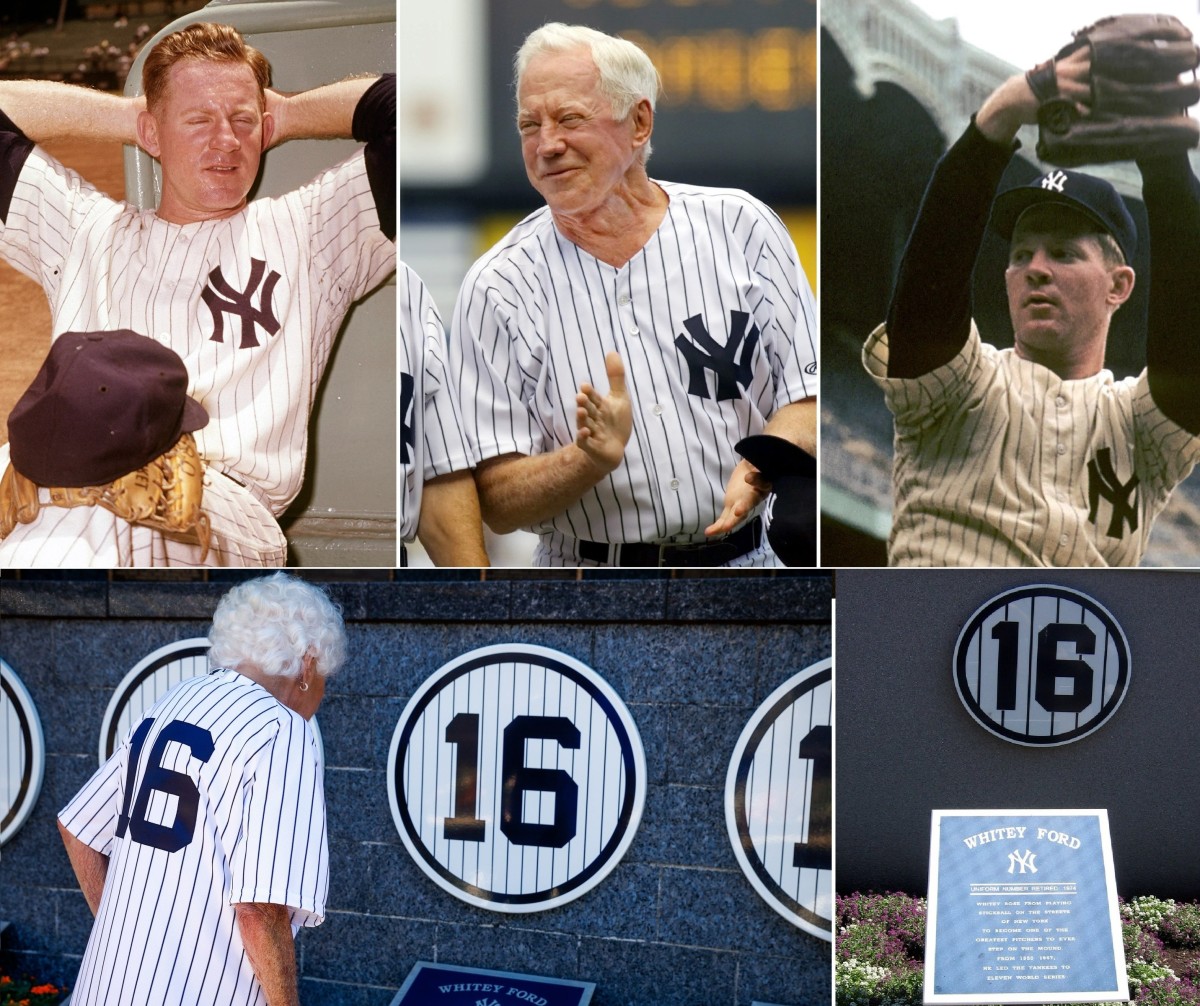
 Follow Us
Follow Us

